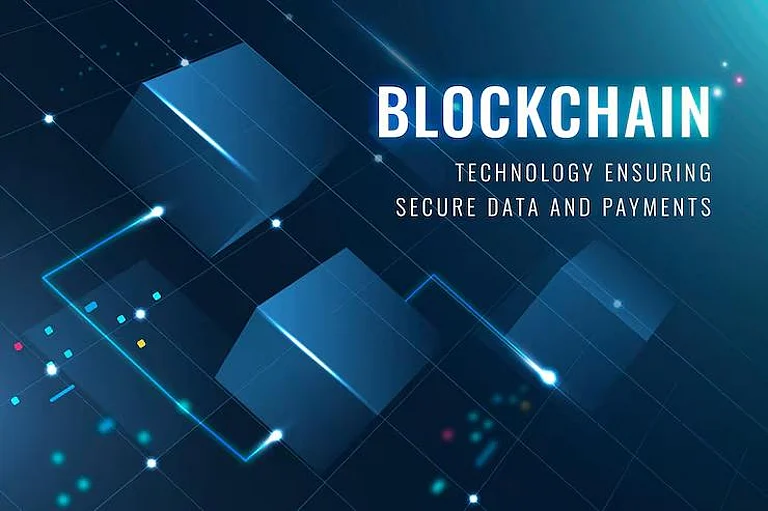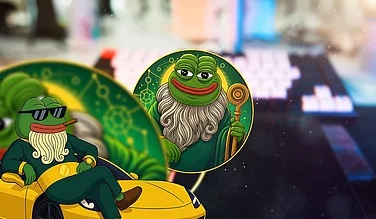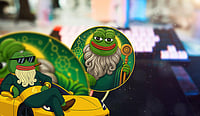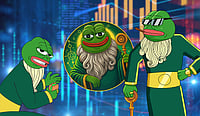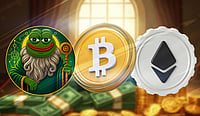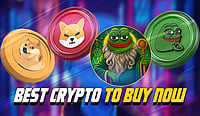In the ever-evolving world of technology, the term Web3 has emerged as a buzzword for developers, investors, creators, and consumers. As the next evolutionary leap of the internet, Web3 will try to usher in an even more democratic, secure, and transparent internet world. Whereas its forebears—Web1, which excelled at static content; and Web2, where user-generated content and socializing took center stage—were characterized by what it provided, Web3 presents a decentralized platform fueled by blockchain, ownership in the digital age, and community control. It is both a technical revolution but also an ideological one, recharting the way we think about data, identity, and internet engagement.
What is Web3?
Web3, or the decentralized web, is an idea of the internet in which users are the owners of their data, digital assets, and their online persona. In contrast to the existing Web2, where companies own and profit from users' information, Web3 is designed to flip the power with decentralization and openness.
Fundamentally, Web3 shatters reliance on centralized middlemen such as tech firms and banks. Instead, it is powered by peer-to-peer networks rooted in blockchain technology—digital books secure and openly recording data and transactions. This allows individuals to trade value and communicate directly without the need to rely on a middleman.
Perhaps one of the defining characteristics of Web3 is its application of smart contracts—self-executing code that enforces contracts automatically on the blockchain. With smart contracts, cryptographic security, and token economies, it's now possible to create open, secure, and censorship-resistant decentralized platforms.
Web3 introduces the vision of a permissionless web where nobody has the gates, and everybody gets to join, create, and trade. This opens up possibilities of world-wide innovation, financial inclusion, and creator empowerment.
Already underway, Web3 can now be envisioned through technologies like decentralized finance (DeFi), NFT marketplaces, social graphs, and virtual gaming worlds—kicking off an open, user-governed digital future.
Blockchain Powers Web3
Web3's building block is blockchain—a decentralized digital ledger of transactions that is secure and stored in a network of computers. Blockchain is groundbreaking in the sense that it's open and decentralized. Once a transaction has been authenticated and added to the blockchain, it can't be altered or deleted. This implies that there will be trust and accountability without central authority.
This is Web3 technology without a middleman. From token exchange and digital identity to voting systems, content monetization, and digital ownership, blockchain gives the secure base for all decentralized applications. It ensures that information is shared, not owned, and all play on the same platform.
Blockchains allow people in Web3 to prove ownership of digital assets and authenticate them, trigger contracts through smart contracts without requiring the conventional legal infrastructure, and participate in decentralized decision-making where power is decentralized. The dominant platforms like Ethereum, Solana, Polkadot, and others are the environments where these dApps are being built. These platforms have distinct features—like scalability, lower transaction fees, or cross-chain interoperability—that make Web3 technology easier to adopt.
As adoption expands, blockchain is transforming from just a financial tool to the basis of an open, secure, and user-driven internet.
Wallets and Tokens: The New Digital Keys to Ownership
With the Web3 era, tokens and wallets are no longer tools but gateways to participation, identity, and ownership within the digital decentralized space. A crypto wallet is not only a storage of digital assets but also one's digital passport granting the user safe access to decentralized applications (dApps), blockchain services, and digital assets. Simple wallets like MetaMask, Phantom, and Trust Wallet offer simple-to-use interfaces that enable users to sign transactions, sign smart contracts, manage NFTs, and seamlessly integrate into DeFi platforms, games, and virtual worlds.
In addition to offering access, wallets also make a self-sovereign identity more convenient, as users will no longer have to create varied usernames and passwords in order to access varied platforms. A single wallet address will instead be capable of acting as a common, secure identifier throughout a range of Web3 environments. It dissociates from the centralized login and requests people to be less reliant on data-crazy platforms while they remain in control of their presence in the digital world.
Tokens, however, refer to value, ownership, or rights in blockchains. Non-fungible tokens like ETH (Ethereum) or BTC (Bitcoin) cannot be replaced and serve as utility tokens or as money. Non-Fungible Tokens (NFTs), on the other hand, cannot be substituted and are distinct and denote digital collectibles, art, virtual property, or game assets. These NFTs allowed new economies for creators and collectors with ownership that can be verified and monetization based on royalties.
Moreover, governance tokens provide users with the right to vote for decentralized community decisions, such as DAOs (Decentralized Autonomous Organizations). The holders of tokens may vote and propose platform improvements, treasury budget, or protocol changes, which makes decision-making transparent and more democratic.
Together, tokens and wallets are redefining our conduct online—swapping traditional paradigms of trust, ownership, and access for blockchain-based alternatives. They embody the core promise of Web3: a world where individuals are no longer just users, but creators and owners of the digital economy.
Real-World Applications of Web3
As Web3 is in the process of development, Web3 applications to our day-to-day lives are rising at a galloping pace in all industries. In finance, DeFi platforms are replacing conventional banks with smart contract services that offer lending, borrowing, trading, and earning interest—medicator-less. In entertainment and art, NFTs have revolutionized digital art, allowing artists to sell directly and create provenance without agents or galleries.
Web3 is also transforming gaming with play-to-own economies where users are the owners of game assets and get revenues in the real world. Axie Infinity and Decentraland are pioneering this new interactive economy. Blockchain is also being explored for healthcare to store and manage patient data securely to ensure data integrity and privacy. Supply chain management is employing Web3 for real-time tracking and authentication of goods to avoid counterfeiting and provide visibility.
Other areas being redesigned through the decentralized potential of Web3 are education, identity verification, music streaming, and crowdfunding. The more industries venture into blockchain-backed technology, the more it becomes inevitable to move towards decentralized infrastructure.
Challenges Confronting Web3
Although its revolutionary potential cannot be underestimated, Web3 also has its limitations. Its most immediate one is likely scalability. Its existing blockchain networks are bottlenecked by transaction time and inflated gas fees, deterring widespread adoption. Developers are attempting to plow ahead with Layer 2 solutions and newer consensus protocols, but this is still a hindrance.
The second problem is user experience. It is complex and intimidating for the average internet user to work with wallets and dApps. Onboarding needs to be simplified before mainstream adoption of Web3. In addition, regulatory clarity concerning cryptocurrencies, tokens, and decentralized governance continues to keep investors and institutions at bay.
Security is also a concern. Blockchain is itself secure, but apps thereupon are vulnerable to hacking, exploits, and phishing. Lastly, concerns of environmental impact as a result of energy-thirsty consensus mechanisms like Proof-of-Work, while increasingly being met with ecologically friendly alternatives like Proof-of-Stake, are still a concern in the public psyche.
Web3 vs Web2: A Paradigm Shift
To truly understand the potential of Web3, one has to find out how radically it deviates from the present internet architecture—Web2. Web2, which started back in the early 2000s, revolutionized the internet experience by providing user-generated content, social networks, and the advent of digital platforms. But at the cost of this innovation came centralization. Massive platforms like Google, Facebook (Meta), Amazon, and others became gatekeepers, accumulating massive amounts of user data and determining distribution of information, commerce, and communication on the web.
Web2 users voluntarily forego privacy in favor of convenience. Your own data—searches, interests, communications, location, and even facial recognition—is gathered, linked, and resold by businesses perpetually. Creators build audiences on platforms they don't own and are forced to rely on algorithms that they can't see and are liable for demonetization or censorship without notice or recourse.
Web3, however, is a user freedom and decentralization movement. It introduces self-sovereign identity, where the individual owns his or her own information with private cryptographic keys in a blockchain wallet. That means that users would not be required to set up accounts with passwords for every application that they use. Their wallet is a gateway to the world, and they are able to interact on decentralized networks without putting their digital identity and privacy at risk.
In addition, Web3 joins together trust and value at the level of the internet. Payments are executed on smart contracts and cryptocurrencies without third-party parties like PayPal or banks. Trust is applied not by a middleman party but by code running on open, immutable blockchains. The system enables permissionless innovation, where any user is able to create and host applications without seeking permission from a corporation or hosting company.
Web3 philosophy also redesigns cooperation on the web as governance systems for communities, such as DAOs, in which users receive a vote and real voice in future directions of a platform. It is far from top-down decision-making in traditional tech companies.
In essence, the difference between Web2 and Web3 is not merely technical—it is also philosophical and architectural. Web2 is defined by platform and corporate ownership, while Web3 subscribes to user ownership, open protocols, and community governance. It envisions an internet where value goes directly to creators and users, not to middlemen shareholders—enabling a more transparent, equitable, and resilient digital future.
Trends and Opportunities in Web3
Web3 is an ongoing ecosystem with future directions indicated through new directions on how this technology will advance. Decentralized Autonomous Organizations (DAOs) are gaining prominence, enabling groups to manage funds, projects, and activity without the exertion of central control. DAOs are reshaping venture capital (such as MetaCartel Ventures) to collaborative creativity (such as Friends with Benefits).
Interoperability is yet another increasing concern. Work is being carried out to enable blockchains to interact with each other effortlessly, furthering further convenience and accessibility to the user. Zero-knowledge proofs (ZKPs) and other privacy technologies are also being further developed, allowing users to check transactions and identities without divulging sensitive details.
Commercially, increasingly venture capital support for Web3 ventures is available, with companies building infrastructure, games platforms, metaverses, and decentralized social networks. Enterprises and governments alike are entering Web3 also in the form of digital currency, identity protocols, and blockchain supply chain management.
For entrepreneurs, creatives, and builders, Web3 represents a vast source of innovation and upending. The early movers here are not only fashioning new business models but redrafting the moral logic of online interactions.
Conclusion
This is how Web3 is leading the digital revolution through the latest technology, ensuring values long desired, including transparency, decentralization, and empowering the users. The future of who owns the internet is not only evolving but also a revolutionary change in the way we use it, from the concept of staying away from centralized control to systems and networks owned by the users that will ensure a more democratic, robust digital future.
With the internet moving away from a corporate-led utility to a people-led ecosystem, space for innovation, equality, and inclusivity grows by a multiplier rate. They are no longer mere passive participants or property in the system—they are creators, owners, and decision-makers. From creators, bypassing intermediaries' money-making off their content to communities voting on platforms with governance tokens, Web3 is rewriting the rules of digital engagement.
There are certainly challenges ahead. Scalability, regulation, security, and adoption are real issues that must be addressed if Web3 ever hopes to deliver on its promise. But the shared energy of the world's Web3 ecosystem—from entrepreneurs and programmers to artists and activists—is advancing quickly and being pushed to an ever-accelerating test.
The coming of Web3 is not a fad—it's a revolution. And as the revolution builds steam, it's not only the tech community that needs to wake up and take notice, but anyone who believes in a more free, fair, and open internet. The infrastructure is there. Now it's up to us to use it to the best advantage.






